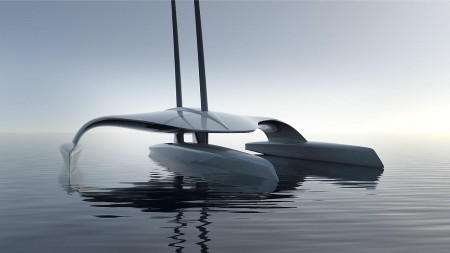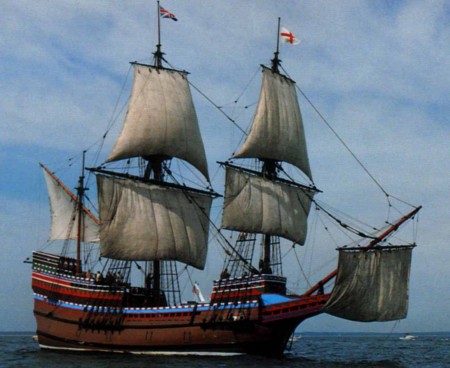August 6, 2015 – Celebrating the 400th anniversary of the Pilgrims’ voyage to America in the original Mayflower, the Marine Institute and School of Marine Science and Engineering, at Britain’s Plymouth University, intend to build and launch a full-sized autonomous ship powered by renewable energy to cross the Atlantic Ocean in 2020. The new Mayflower will serve as a test bed for solar, wave and sail technology as well as new navigation software.
Why is this important? Because transportation is the second largest source of greenhouse gas emissions in the 21st century, and marine shipping lags other modes in addressing carbon reductions. On the Plymouth University website describing the project there is a wonderful statement about the lack of innovation in marine technology: “if we can put a rover on Mars and have it autonomously conduct research, why can’t we sail an unmanned vessel across the Atlantic Ocean and, ultimately, around the globe?”
To address this the University and a private partner, MSubs, a local Plymouth marine builder of both submersible and surface autonomous vessels, have taken on the task to create a state-of-the-art solution. They call the project MARS, standing for Mayflower Autonomous Research Ship. MSubs has developed CCMM, a command control system for autonomous operations at sea.
The Mayflower, seen in the artist concept below, is to be a catamaran. Shuttleworth Design, an award winning Isle of Wight-based British company, will provide the design expertise. The company has built some of the most advanced catamarans seen on the ocean today. One of its designs is an 18.3 meter boat called the 60-foot Electric solar Power Catamaran. The company has also designed trimaran super yachts as large as 80 meters in length.
MARS is meant to be a demonstration of marine technological innovation, capable of influencing the future of shipping in the 21st century. In recreating the voyage of the original Mayflower which departed from Plymouth back in 1620, the public interest in the voyage should be high. The university plans to make the sailing a live educational resource of students around the world who will be able to watch and even participate interactively with history.
Why crew-less drone ships? Because the oceans of the world are not always smooth sailing. For extreme marine environments autonomy is preferred to putting human crews in harms way. Just think polar sea routes or Somalian pirates and you can begin to understand how a drone can mitigate these risks. And then there are numerous other uses including military, survey and exploration activities.
Why green? Because maritime technology to this day remains largely fossil-fuel dependent relying on diesel engines powered by bunker oil which is carbon intensive requiring scrubber retrofits for smokestacks to reduce the carbon emissions produced, essentially early to mid-20th century technology still in use in 21st.












